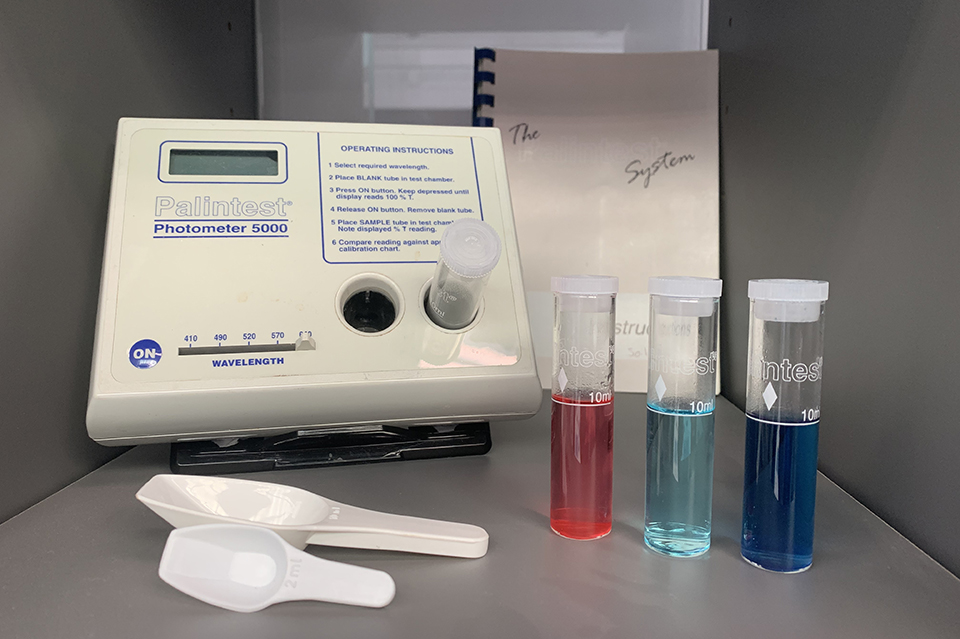32. Palintest for nutrient analysis
Geography Laboratories
Palintests are a simple and quick way to analyse soils and water for a range of nutrients.
Nutrient concentrations are determined using a portable photometer, which works on the principles of colorimetric analysis. The nutrient being studied is extracted into solution, before regents cause a colour changing reaction which dyes the liquid sample depending on the concentration of the substance present. The sample is placed into the photometer where an incandescent light is shone through. The light then passes through a filter and onto a photocell where the transmittance (the proportion of light that reaches the photocell) is determined. The more intense the colour, the more light is absorbed by the sample, and thus, a lower transmittance is recorded. The transmittance is then converted into a concentration (mgL-1) using a calibration chart.
At Loughborough, our students most commonly test for nitrate and phosphate concentrations in lakes and rivers. High levels of these nutrients in water bodies can lead to eutrophication (algal blooms and excessive plant growth which affect water quality and lead to loss of fauna and flora). Eutrophication can be caused by agricultural run-off from fertilisers and animal waste, sewage, fossil fuels and factory outflows.

Find out more
Find out more information on the facilities and resources available at Geography and Environment here